
The Laconia incident was a series of events surrounding the sinking of a British passenger ship in the Atlantic Ocean on 12 September 1942, during World War II, and a subsequent aerial attack on German and Italian submarines involved in rescue attempts. RMS Laconia, carrying 2,732 crew, passengers, soldiers, and prisoners of war, was torpedoed and sunk by U-156, a German U-boat, off the West African coast. Operating partly under the dictates of the old prize rules, the U-boat's commander, Korvettenkapitän Werner Hartenstein, immediately commenced rescue operations. U-156 broadcast her position on open radio channels to all Allied powers nearby, and was joined by the crews of several other U-boats in the vicinity.
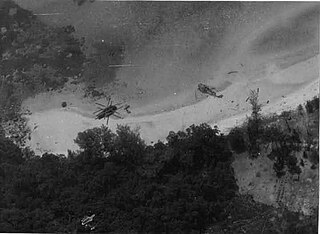
The Mayaguez incident took place between Kampuchea and the United States from 12 to 15 May 1975, less than a month after the Khmer Rouge took control of the capital Phnom Penh ousting the U.S.-backed Khmer Republic. After the Khmer Rouge seized the U.S. merchant vessel SS Mayaguez in a disputed maritime area, the U.S. mounted a hastily-prepared rescue operation. U.S. Marines recaptured the ship and attacked the island of Koh Tang where it was believed that the crew were being held as hostages. Encountering stronger than expected defences on Koh Tang, three United States Air Force helicopters were destroyed during the initial assault and the Marines fought a desperate day-long battle with the Khmer Rouge before being evacuated. The Mayaguez's crew were released unharmed by the Khmer Rouge shortly after the attack on Koh Tang began. The names of the Americans killed, including three Marines left behind on Koh Tang after the battle and subsequently executed by the Khmer Rouge, are the last names on the Vietnam Veterans Memorial.

The Fairchild C-123 Provider is an American military transport aircraft designed by Chase Aircraft and built by Fairchild Aircraft for the U.S. Air Force. In addition to its USAF service, which included later service with the Air Force Reserve and the Air National Guard, it went on to serve the U.S. Coast Guard and various air forces in Southeast Asia. During the War in Vietnam, the C-123 was used to deliver supplies, to evacuate the wounded, for agent insertions behind enemy lines, and was also used to spray Agent Orange.
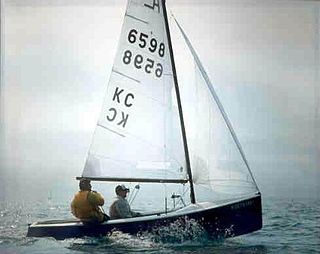
Uffa Fox CBE was an English boat designer and sailing enthusiast, responsible for a number of innovations in boat design. Not afraid of courting controversy or causing offense, he is remembered for his eccentric behaviour and pithy quotes, as much as for his original boat designs.

The Boeing B-29 Superfortress is a WWII era long range, strategic heavy bomber that was produced in many experimental and production models.
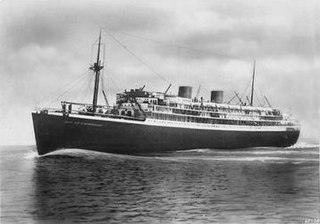
TSMS Lakonia was an ocean liner that was launched in 1929 for Netherland Line as the ocean liner Johan van Oldenbarnevelt. In 1962 she became the Greek Line cruise ship TSMS Lakonia. On 22 December 1963 she caught fire at sea and on 29 December she sank. 128 people were killed in the disaster.

Royal Air Force Bentwaters or more simply RAF Bentwaters, now known as Bentwaters Parks, is a former Royal Air Force station about 80 miles (130 km) northeast of London and 10 miles (16 km) east-northeast of Ipswich, near Woodbridge, Suffolk in England. Its name was taken from two cottages that had stood on the site of the main runway during its construction in 1943.

Air-sea rescue, and aeronautical and maritime search and rescue (AMSAR) by the ICAO and IMO, is the coordinated search and rescue (SAR) of the survivors of emergency water landings as well as people who have survived the loss of their seagoing vessel. ASR can involve a wide variety of resources including seaplanes, helicopters, submarines, rescue boats and ships. Specialized equipment and techniques have been developed. Both military and civilian units can perform air-sea rescue. Its principles are laid out in the International Aeronautical and Maritime Search and Rescue Manual. The International Convention on Maritime Search and Rescue is the legal framework that applies to international air-sea rescue.

A lifeboat or liferaft is a small, rigid or inflatable boat carried for emergency evacuation in the event of a disaster aboard a ship. Lifeboat drills are required by law on larger commercial ships. Rafts (liferafts) are also used. In the military, a lifeboat may double as a whaleboat, dinghy, or gig. The ship's tenders of cruise ships often double as lifeboats. Recreational sailors usually carry inflatable liferafts, though a few prefer small proactive lifeboats that are harder to sink and can be sailed to safety.

The A-1 lifeboat was a powered lifeboat that was made to be dropped by fixed-wing aircraft into water to aid in air-sea rescue operations. The sturdy airborne lifeboat was to be carried by a heavy bomber specially modified to handle the external load of the lifeboat. The A-1 lifeboat was intended to be dropped by parachute during Dumbo missions to land within reach of the survivors of an accident on the ocean, specifically airmen survivors of an emergency water landing.

The 563rd Rescue Group is a United States Air Force unit stationed at Davis-Monthan Air Force Base, Arizona. The group also controls the rescue squadrons at Nellis Air Force Base, Nevada. It is assigned to the 355th Wing. The group directs flying operations dedicated to personnel recovery and is part of Air Combat Command. The group was activated under its current designation at Davis-Monthan in 2003 to command rescue units in the western United States.
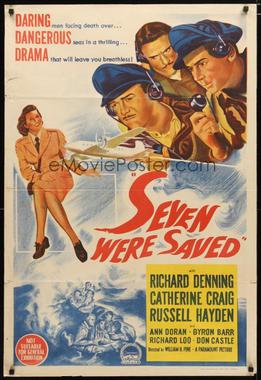
Seven Were Saved is a 1947 American adventure drama film directed by William H. Pine and starring Richard Denning, Catherine Craig and Russell Hayden. The film's opening title says: "This film is dedicated to the men of the AAF Air-sea rescue service, who risk their lives daily that others may live." Seven Were Saved was the first of a number of films that dramatized survival at sea after an aircraft crash.

Dumbo was the code name used by the United States Navy during the 1940s and 1950s to signify search and rescue missions, conducted in conjunction with military operations, by long-range aircraft flying over the ocean. The purpose of Dumbo missions was to rescue downed American aviators as well as seamen in distress. Dumbo aircraft were originally land-based heavy bomber aircraft converted to carry an airborne lifeboat to be dropped in the water near survivors. The name "Dumbo" came from Walt Disney's flying elephant, the main character of the animated film Dumbo, appearing in October 1941.
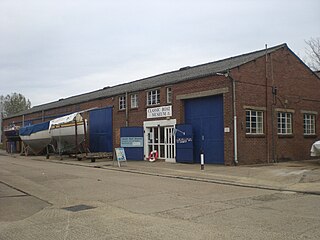
The Classic Boat Museum is a museum of boats and of the history of yachting and boating. It is located on the Isle of Wight at two separate sites on either side of the River Medina; The Boat Collection in Cowes, and The Gallery in East Cowes. It is a working museum featuring restoration. Work takes place all year round. In addition to classic boats, the museum contains tools, artefacts, books, photographs, film and archival items that relate to the history of boat building, sailing, yachting, cruising and racing over the last century.

Airborne lifeboats were powered lifeboats that were made to be dropped by fixed-wing aircraft into water to aid in air-sea rescue operations. An airborne lifeboat was to be carried by a heavy bomber specially modified to handle the external load of the lifeboat. The airborne lifeboat was intended to be dropped by parachute to land within reach of the survivors of an accident on the ocean, specifically airmen survivors of an emergency water landing. Airborne lifeboats were used during World War II by the United Kingdom and on Dumbo rescue missions by the United States from 1943 until the mid-1950s.

The 34th Weapons Squadron is a United States Air Force unit. It is assigned to the USAF Weapons School, stationed at Nellis Air Force Base, Nevada.
Water safety refers to the procedures, precautions and policies associated with safety in, on, and around bodies of water, where there is a risk of injury or drowning. It has applications in several occupations, sports and recreational activities.
The Vincent lifeboat engine was a unique design of two-stroke petrol engine. It was developed during World War II as a highly efficient engine for airborne lifeboats, providing a long range from little fuel.

RNLB Foresters Centenary is a retired Liverpool-class lifeboat of the Royal National Lifeboat Institution (RNLI), stationed in the English coastal town of Sheringham in the county of Norfolk in the United Kingdom. The lifeboat was on station for 25 years between 1936 and 1961 when she was sold. She has been restored to her original condition and is exhibited in Sheringham Museum.



















